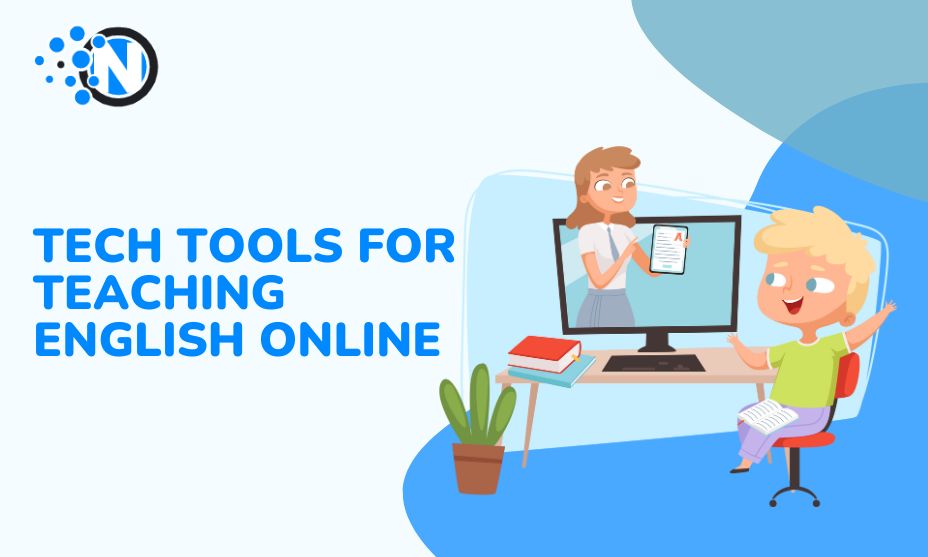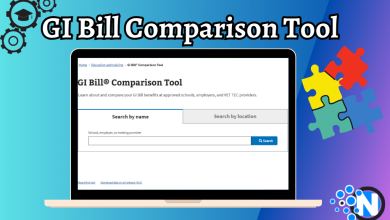Essential Tech Tools for Teaching English Online

Education and the way we teach have undergone a transformation in recent years. Due to increased access to digital resources, people all over the world now have the opportunity for online learning. An important factor in all this is how online learning is presented, especially with language learning. The use of technology tools is an indispensable aspect of what makes for a good online English teacher. We are going to describe Essential Tech Tools for Teaching English Online.
Communication Tools
While it is possible to learn new skills and subjects online without teacher-student interaction, that is not something recommended for learning languages. In the case of online language learning, communication tools can facilitate the interaction between teachers and students.
To start, video conferencing tools like Zoom and Google Meet make it possible to have real-time, face-to-face conversations. This live interaction fosters a sense of connection between educators and students, and increases engagement, which is crucial for language learning. With the aid of live video lessons, teachers can give interactive lectures, give direct feedback, and create a dynamic learning environment.
Another way of communicating is via instant messaging. Tools like Slack provide direct and convenient communication channels between teachers and students and students between themselves. Instant messaging allows students to ask questions when in doubt, the sharing of resources, and individual support.
Online will never be the same as in a real classroom, but tools like Google Classroom and Microsoft Teams simulate a similar environment. These virtual classrooms can act like a common space for course materials, assignments, discussions, and collaboration.
As for teachers themselves, online communities like Reddit and Facebook can certainly give interesting opportunities for exchanging ideas, asking for advice, or support in times of need.

Content Creation and Presentation Tools
Online teaching, whether it be English or any other subject, relies heavily on creating good lesson material and presentation tools. Tools that provide that can greatly contribute to students’ engagement.
Interactive whiteboard tools like BitPaper and Jamboard allow teachers to create visually engaging presentations and interactive exercises, thus simulating a traditional blackboard. When used in combination with video conferencing tools, teachers can create a truly dynamic and participatory learning experience in a digital classroom, which is especially useful for language learning.
Presentation tools like PowerPoint and Prezi can be an alternative to interactive whiteboards. Thanks to the drawing tools of the presentations, the teachers can be on time at the session by surfing through the visuals before the lesson and even including some multimedia elements such as animations, audio parts or videos in the education.
Classrooms can suit Loom and Screencast-O-Matic, which are screen-sharing tools that give an opportunity for teachers to show their screen by annotation documents. Alongside these instruments, professors can show the students how to present the problem-solving algorithm, and explain clearly when the students ask questions that have not yet been covered in the lectures.
Language Learning Platforms
Learning the language is different from the sciences, maths or other subjects because it usually requires practice from the learner. It could be better when it is practiced with another person.
Duolingo and Babbel are two recognizable apps that contribute to this category of applications that provide gamified language exercises adapted to your learning level. However, the platforms may be too shallow for experienced learners and also not very engaging because they are easily available and easygoing. If you want to find out more about language-learning apps, head over here for a list of the best language-learning apps.
Noticeably gamification is on the upswing at online language learning and sites like Quizlet and Kahoot are well known examples of this trend. definitely make teachers break out of their usual teaching style and infuse entertainment into the education process. The strategy I propose is that I will be able to make quizzes on vocabulary or grammar where the students can compete with each other through these tools. Games prompt students’ active involvement and concurrently let them evaluate on their own progress at the go.
An important part of language learning is reading, and digital libraries like Project Gutenberg and Newsela offer a large selection of books, articles, and other multimedia content. What makes these digital libraries so convenient is that you can easily find appropriate learning materials for students based on their personal interest and proficiency level.
Lastly, language exchange platforms like Tandem and HelloTalk make it possible for students to practice English conversations with native speakers worldwide. Besides the obvious advantages of talking to a native speaker, these platforms also provide a cultural exchange, both for the student as the native speaker.
Assessment and Feedback Tools
An important part of teaching is giving feedback and taking assessments. Without these tools, it would be difficult to gauge students’ progression and to tailor lesson plans to students’ individual needs.
Online quiz and assessment tools are an easy way to get a better insight in your students’ proficiency level. Examples of such tools are Google Forms and Quizizz. These tools provide immediate feedback, automatic grading (if multiple choice), and even data analytics. However, it is important to note that online quizzes and assessments might be vulnerable to cheating.
Grading and feedback management systems like Turnitin and GradeScope offer all of the above, and also plagiarism detection. In a digital world with instant access to AI platforms like ChatGPT, students might be tempted to use those tools to their advantage. Having the right resources to detect such plagiarism or AI-generated text will help teachers better assess a student’s level.
Security and Privacy
While an increasingly digital world offers many advantages, it also increases the risk for data breaches. Teachers need to protect both themselves as well as any personal information about their students.
Using well-known video conferencing platforms like Zoom or Google Meet with end-to-end encryption helps to protect against unwelcome access to your virtual classroom. Slack and Microsoft Teams are also well-known for their secure communication via encrypted messaging systems. To protect yourself online, consider using a VPN network for all your online activity.
How to become an online English teacher?
Is your interest sparked to become an online English teacher but you’re not sure how? A good starting point is getting a TEFL certification. TEFL stands for Teaching English as a Foreign Language and gives you the credentials needed for an online English teaching job. To find out more, check out this introduction to teaching English online without a degree.




